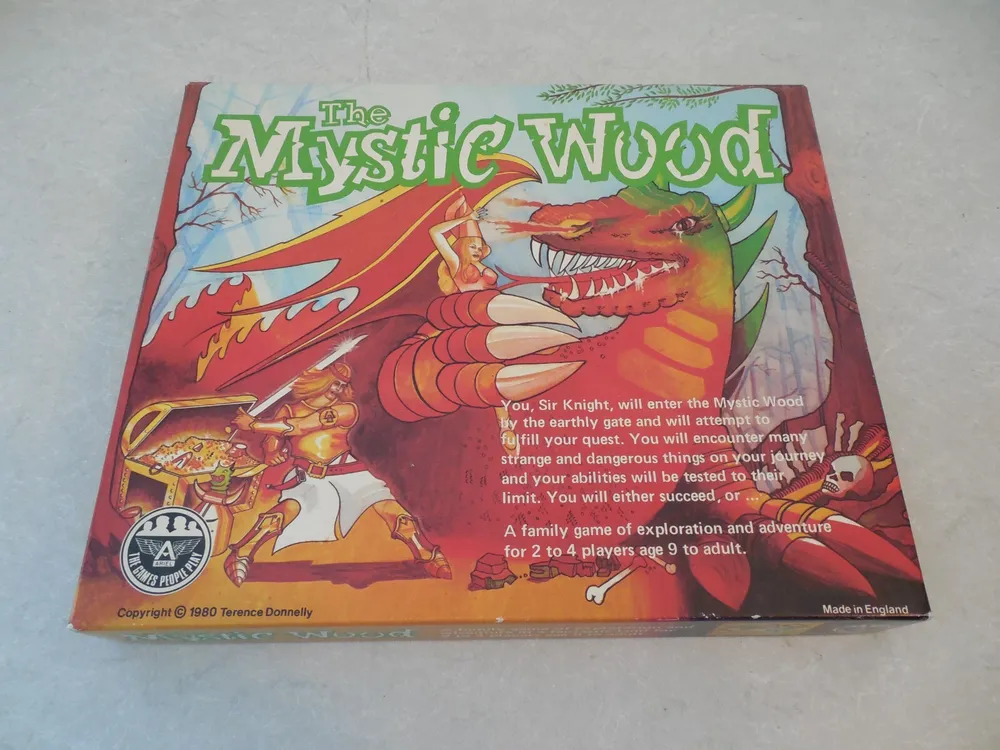The Mystic Wood (1980)
The Mystic Wood
The Mystic Wood is a board game published in 1980 by Philmar Ltd., and in 1983 by The Avalon Hill Game Company. It is an early dungeon crawler set in a random tiled board of forest clearings. The game’s “board” consisted of nearly 50 tiles, about half of which represented the titular mystic wood, while the other half represented normal forest clearings. The game is similar to Terence Donnelly’s other fine adventure game, Sorcerer’s Cave, but is a much cleaner, tighter design.
Why is The Mystic Wood Popular?
The Mystic Wood is significant because it was one of the early dungeon crawler games and was well-received by critics. It is simple enough to be a good fun game but is sufficiently complex to allow the development of different strategies and interesting tricks. It is also considered a good beer-and-pretzels game, ideal for finishing off an evening of long games.
Game Components of The Mystic Wood
How To Setup The Mystic Wood
To set up the game, you need to create a large play area. Start by shuffling and placing the 45 cards face down, with the exception of three specific cards: the Earthly Gate, the Tower, and the Enchanted Gate. These cards are always placed face up and serve as key reference points. The cards are divided into two types based on their background colors and are placed in separate areas to ensure randomization and structure.
Gameplay Mechanics and Game Objective
Player Experience
The Mystic Wood offers a dynamic and immersive experience with its unique victory conditions and character upgrades. Players must navigate through a randomly set up forest, managing events, combats, and special encounters. The game allows for both solo play and competitive multiplayer, making it versatile for different player preferences.
Pros
Cons
Personal Thoughts on The Mystic Wood
The Mystic Wood is ideal for fans of fantasy role-playing games and those who enjoy a mix of exploration, combat, and strategic character development. While it solves the issue of character improvement without bookkeeping, it retains some punitive mechanics that might deter modern players. Despite this, the game’s thematic depth and unique victory conditions make it a compelling choice for those interested in a classic, challenging adventure game.
We are supported by our audience. When you purchase through links on our site, we may earn an affiliate commission, at no extra cost for you. Learn more.

